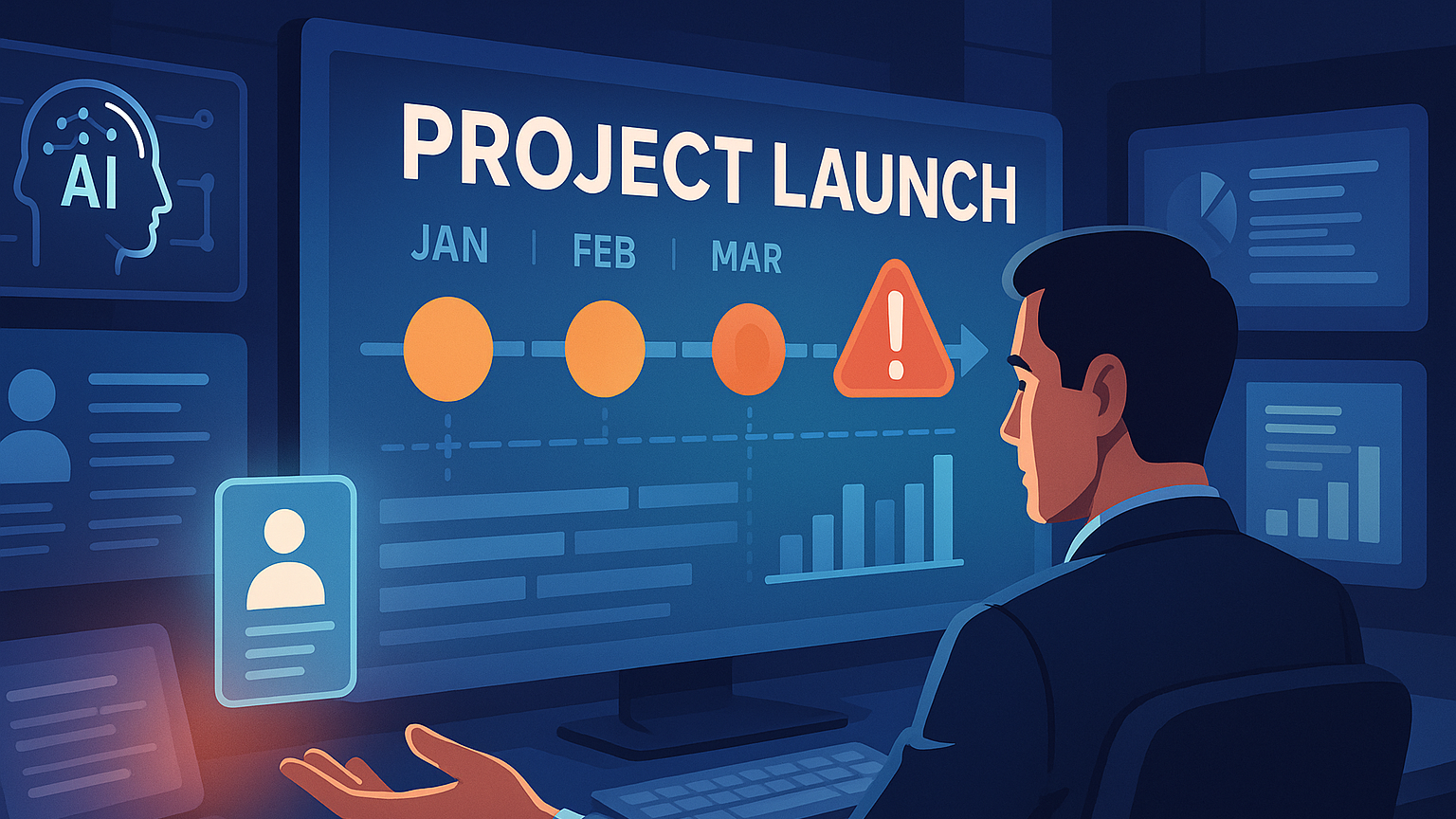
AI in Product Management for Effective New Product Development and Launch Presentations
You’re operating in a world where product teams are expected to move faster, make smarter decisions, and align more stakeholders than ever before. AI is no longer a futuristic buzzword reserved for data scientists; it’s a practical tool that can change how you manage product discovery, development, and the critical moment of launch. In this article you’ll get targeted, practical guidance that fits into your role as a product manager, product leader, or innovator, showing you how AI can increase your productivity and help you deliver new products and launch presentations that win hearts and minds.

Why AI Matters to Product Managers
AI changes the calculus of product management by enabling you to synthesize vast amounts of data, automate repetitive tasks, and surface insights that were previously hidden. Instead of spending your time manually aggregating market research or creating decks, you can rely on AI to accelerate those workflows while you focus on strategy and stakeholder alignment. You’ll still need judgment, but AI augments your capabilities, letting you test more hypotheses, iterate faster, and produce launch presentations that are both data-rich and emotionally compelling.
AI Awareness: Core Concepts Every PM Should Know
You don’t need a PhD to leverage AI effectively, but you do need basic literacy. Understand the difference between supervised and unsupervised models, the role of natural language processing (NLP) and computer vision, and the difference between using off-the-shelf models versus training custom ones with your data. Recognizing the limitations of AI — bias, hallucination, and data quality dependencies — helps you use tools responsibly and spot when human intervention is required.
How AI Fits into the New Product Development Lifecycle
AI is not a single point solution; it’s a set of capabilities that can be applied across discovery, ideation, prototyping, testing, and launch. From automating competitive intelligence to generating product concepts, from simulating user responses to creating polished launch decks, AI augments many stages. Viewing AI as an integrated toolkit rather than a one-off feature helps you architect processes that scale and adapt as your product and team evolve.
Discovery and Market Research: Faster, Deeper Insights
In discovery, you’ll often be overwhelmed by the volume of information — user interviews, competitor updates, industry reports, social chatter. AI-powered tools can synthesize this data into concise themes, highlight emerging trends, and even surface unmet user needs by analyzing qualitative feedback at scale. When you use AI to accelerate discovery, you can broaden hypothesis generation and avoid basing decisions on a few vocal opinions, giving your roadmap a stronger empirical foundation.
Idea Generation and Prioritization: From Many Ideas to Few Bets
Generating ideas is easy; choosing which ones to prioritize is hard. AI can help by scoring ideas against criteria like strategic fit, estimated impact, customer pain alleviation, and implementation complexity. You can feed AI historical outcomes from past features, market signals, and customer sentiment to create probabilistic estimates of success. This doesn’t replace your judgment, but it gives you a data-informed starting point for prioritization conversations and helps justify your recommendations to stakeholders.

Concept Testing and Prototyping: Faster Feedback Loops
When you need to validate concepts quickly, AI speeds up prototyping and feedback collection. You can use AI to generate wireframes, produce realistic mock content, or simulate customer interactions with conversational prototypes. For testing, sentiment analysis and clustering of qualitative responses help reveal which concepts resonate most and why. By shortening the feedback loop you can iterate prototypes more often and reduce the risk of building features that miss the mark.
Design and User Experience: Smarter Iteration with AI
Design teams are increasingly using generative AI to explore layouts, copy variants, and micro-interactions. As a product manager, you can use AI to propose design options based on platform conventions and accessibility guidelines, then prioritize experiments around the variants that the model predicts will perform best. This collaborative approach lets you iterate on user experience faster and focus your design team’s creativity where it matters most.
Development and Engineering Collaboration: Smarter Handoffs
AI can improve the quality of tickets, acceptance criteria, and edge-case handling by reviewing user stories and suggesting clarifications or missing test cases. Automated code review tools and AI-assisted test generation can speed up engineering cycles and reduce rework. When you align engineering and product with AI-augmented documentation and spec generation, you’ll reduce misinterpretation and launch more predictable releases.

Testing, QA, and Validation: Scale Your Coverage
Testing is a place where AI can dramatically increase coverage without proportional increases in effort. Automated test case generation, anomaly detection in metrics, and predictive models that highlight likely failure modes make your QA process more comprehensive. You’ll be able to catch regressions earlier and rely on AI to prioritize the most critical tests, enabling higher confidence in launches and fewer post-launch surprises.
Roadmapping and Prioritization: Dynamic, Data-Informed Plans
Traditional roadmaps can become outdated quickly. AI helps you create dynamic roadmaps that adapt to real-time signals like user behavior, market changes, and development velocity. By integrating predictive insights into your roadmap process, you can make re-prioritization decisions that are transparent and defensible. This allows you to manage stakeholder expectations and keep the focus on outcomes rather than features.
Pricing, Positioning, and Go-to-Market Strategy
AI can augment your decision-making around pricing and positioning by analyzing historical churn, value metrics, competitor pricing, and elasticity signals from experiments. You can use AI to simulate different pricing scenarios and estimate revenue impact, or to craft messaging frameworks tailored to customer segments. This reduces the guesswork in GTM strategy and helps you align product, marketing, and sales around a unified value proposition.
Launch Planning and Cross-Functional Alignment
A successful launch is the result of disciplined cross-functional coordination. AI helps here by automating status tracking, identifying dependencies, and surfacing risks that could derail timelines. You can also use AI to generate stakeholder updates and timeline scenarios so that everyone has a clear picture of trade-offs and contingency plans. This keeps launch teams aligned and reduces last-minute surprises that compromise the customer experience.

Creating Launch Presentations with AI: Overview
Your launch presentation is more than a deck; it’s the persuasive narrative you use to get buy-in, align teams, and energize customers or partners. AI can assist you in structuring the story, generating data visualizations, creating polished slides, and tailoring the narrative for different audiences. When used properly, AI saves time and elevates the clarity and impact of your presentations so you can focus on delivery and strategic messaging.
Crafting a Compelling Narrative with AI
Story is the most persuasive part of any launch. AI can help you distill complex analyses into a clear storyline by identifying the most compelling data points, suggesting logical flow, and even proposing opening hooks. You can prompt AI with your objectives, audience personas, and key findings, and it will produce narrative drafts you can refine. The result is a tighter story that highlights product value, market opportunity, and the plan to capture it.
Data-Driven Storytelling and Visuals
Numbers are persuasive only when they’re presented clearly. AI tools can transform raw datasets into visuals and textual explanations that make insights accessible. From generating charts that best represent your data to annotating trends and explaining causality, AI-driven visual analytics helps you communicate the “so what” of your findings. This level of clarity is especially useful when you’re presenting ROI projections, usage forecasts, or A/B test results.
Slide Generation and Design Automation
Creating a polished slide deck is time-consuming. AI can draft slides, propose layouts, and select imagery consistent with your brand and message. Rather than starting from a blank slide, you can iterate on AI-generated drafts that include suggested headlines, key bullets, and visuals. This saves you hours and helps ensure consistency across stakeholder-facing materials, especially when you need multiple variants for different audiences.

Personalizing Presentations for Different Stakeholders
Different stakeholders care about different things: executives want strategic impact and financials, engineers want technical feasibility, and customer success teams want adoption plans. AI can generate tailored presentation versions that emphasize the right topics, reorder content for maximum relevance, and surface anticipated questions per audience. This targeted approach increases the chance of buy-in and supports productive, focused conversations during launch meetings.
Rehearsal and Presenter Coaching with AI
Delivery matters. AI-powered rehearsal tools can give you feedback on pacing, filler words, clarity, and emotional tone. Some platforms can simulate stakeholder Q&A and provide suggested responses based on the content of your presentation and historical objections. Using AI as a practice partner lets you refine both content and delivery, so you appear confident and ready to address difficult questions under pressure.
A/B Testing and Iteration of Presentation Elements
You can treat parts of your presentation like product experiments. AI helps you test different headlines, imagery, and narrative sequences with internal samples or pilot audiences. Using multivariate testing and predictive scoring, AI can indicate which variants are likely to land best with your target audience. This evidence-based approach reduces reliance on intuition and increases the likelihood that your launch will achieve the desired reaction.
Measuring Launch Success and Product Impact
After launch, AI helps you close the loop between presentation promises and reality by tracking metrics that matter: adoption, retention, revenue, and support volume. AI-driven anomaly detection and cohort analysis reveal whether early indicators align with your forecasts. These insights inform follow-up communications, roadmap adjustments, and investment decisions, enabling you to iterate product and messaging in a data-informed manner.
Team Structure and Skills: What You’ll Need
To fully realize AI’s potential in product development and launch presentations, you’ll need a blend of skills: product thinking, data literacy, prompt engineering, UX design, and change management capabilities. You don’t have to hire a full team of machine learning engineers to get value; instead focus on cross-functional upskilling so product managers, designers, and analysts can use AI tools effectively. This builds internal capacity and helps you scale AI adoption responsibly.
Implementing AI in Your Product Workflow: A Practical Roadmap
Start small with high-impact, low-risk experiments. Identify repetitive tasks or bottlenecks in discovery, prototyping, or presentation creation and pilot AI tools there. Measure time saved, quality improvements, and stakeholder satisfaction. Iterate on integrations with your current toolset and expand use as you build governance, documentation, and training. This incremental approach keeps disruption manageable while proving ROI and building organizational buy-in.
Governance, Ethics, and Trust
Using AI responsibly is critical. You’ll need policies around data privacy, model validation, and transparency. Always validate AI outputs, especially when they inform strategic decisions or external communications. Address bias by auditing training data and results, and make sure stakeholders understand where AI was used in decision-making. Establish clear approval workflows so that AI augments human judgment rather than replacing it.
Common Pitfalls and How to Avoid Them
It’s easy to fall into traps: over-relying on AI without understanding limitations, underestimating data quality issues, or creating presentations that are technically polished but emotionally flat. Avoid these pitfalls by pairing AI outputs with human review, maintaining high-quality data hygiene, and keeping the audience at the center of your storytelling. Resist the temptation to automate everything; prioritize areas where AI adds the most measurable value.
Practical Tools and Vendors You Can Try
There are now numerous AI tools tailored to product management, analytics, design, and presentation creation. Below are some categories and representative tools to explore, but remember to evaluate each for security, compliance, and fit with your workflows.
- Generative content and slide tools: tools that draft slides, headlines, and narratives for presentations.
- Market and research synthesis: platforms that summarize research, track competitors, and synthesize qualitative data.
- Analytics and visualization: tools that auto-generate charts, detect anomalies, and annotate insights.
- Design and prototyping: generative design tools that produce wireframes, assets, and copy for prototypes.
Evaluate vendors based on data governance, integration capabilities, ease of use, and the ability to export or modify outputs. Pilot multiple tools in parallel when possible, and prioritize those that integrate with your existing stack to minimize friction.
Checklist for an AI-Enabled Launch Presentation
Before you present, run through a simple checklist to make sure AI has been used effectively and responsibly. Confirm that the narrative aligns with the data, visuals accurately reflect metrics, audience-specific variants are ready, and rehearsals with AI feedback have been completed. Validate that all AI-generated claims are sourced and approved, and ensure you have contingency answers for anticipated objections. This discipline helps you turn AI speed into credible, trustworthy presentations.
Case Study: Rapid Consumer App Launch
Imagine you’re launching a new consumer mobile feature designed to increase retention. You use AI to synthesize user interviews into three thematic problems, generate three feature concepts, and score them against impact and effort estimates. You prototype the top concept with AI-assisted design and use simulated user conversations to refine onboarding flows. For the launch presentation, AI drafts a narrative, generates charts from product analytics, and produces audience-specific slides for executives and customer support. Post-launch, AI-driven cohort analysis shows a 12% lift in retention for the target segment, and the evidence from the AI-augmented process helps secure additional roadmap funding. This is the kind of pragmatic, measurable outcome you can expect when you apply AI to targeted stages of NPD.
Case Study: B2B Product Rollout to Sales Teams
In a B2B context, you’re introducing a platform enhancement aimed at increasing deal velocity. AI analyzes CRM data and surfaces segments that will benefit most, creating tailored value propositions for each. You generate sales enablement decks automatically, with recommended objections and battlecards based on historical win/loss reasons. During internal launch sessions, AI simulates customer questions and helps prepare responses. Post-launch, AI monitors win rates and flags accounts that need follow-up. The result is a tightly coordinated launch where sales adoption accelerates because the messaging and collateral were data-driven and tailored.
How to Scale AI Adoption Without Breaking Things
Scaling requires clear governance, training, and a feedback loop. Create a center of excellence or designate an AI champion within product to curate best practices, manage vendor relationships, and collect success stories. Invest in training so your team knows how to prompt and validate AI outputs. Set measurable KPIs for AI pilots — time saved, accuracy improvements, adoption rates — and iteratively expand use cases where you see positive outcomes. This approach keeps risk manageable and ensures sustained value.
Final Recommendations
Start with the highest-value, lowest-risk tasks where AI can free up your time and improve outcomes — discovery synthesis, slide drafting, and data visualization are good starting points. Maintain an experimental mindset: pilot, measure, and scale what works. Keep humans in the loop for final decisions, especially where reputational or legal risk exists. Building AI competence across your product team will make new product development faster, more evidence-driven, and your launch presentations more persuasive.
